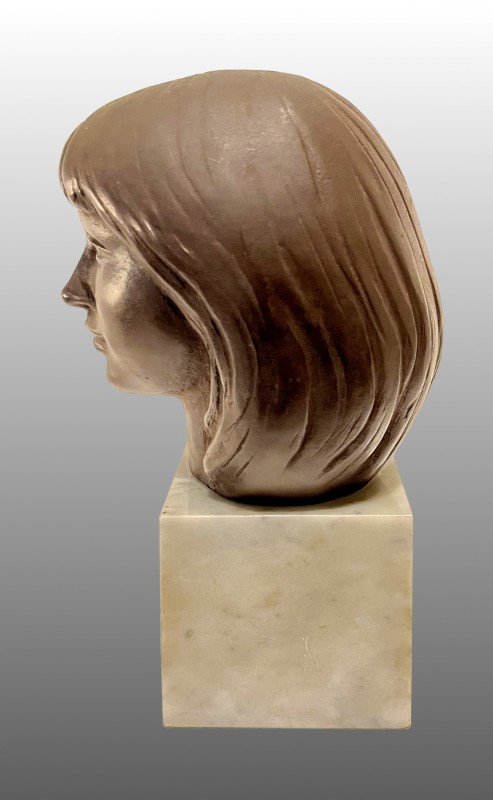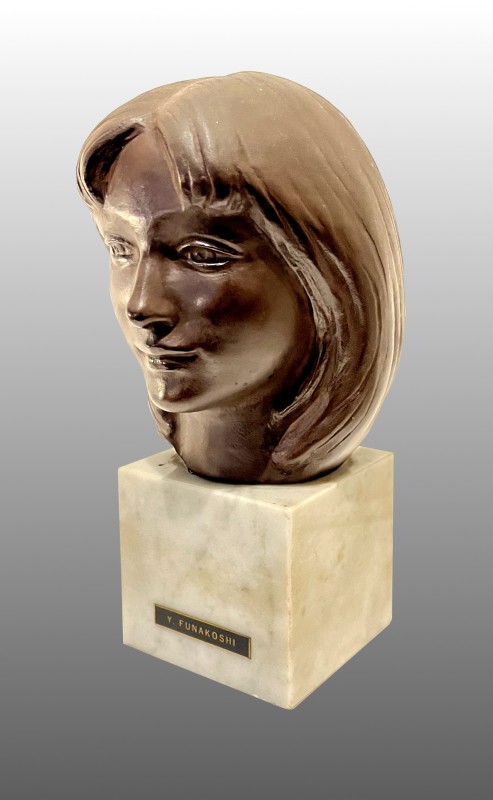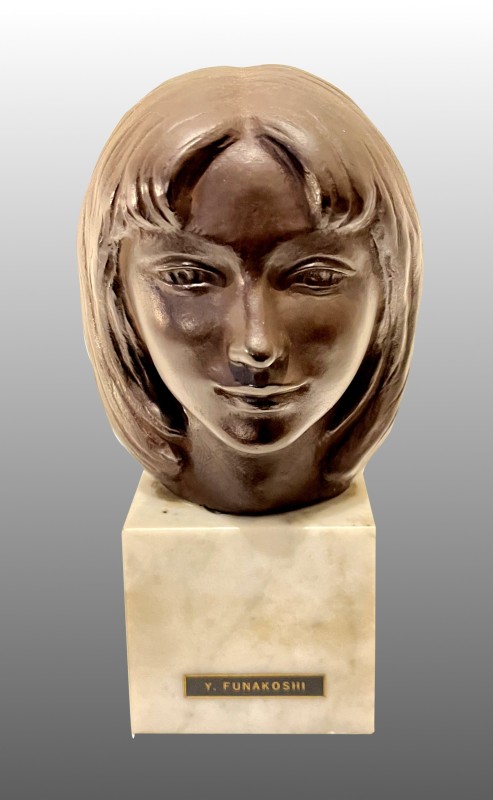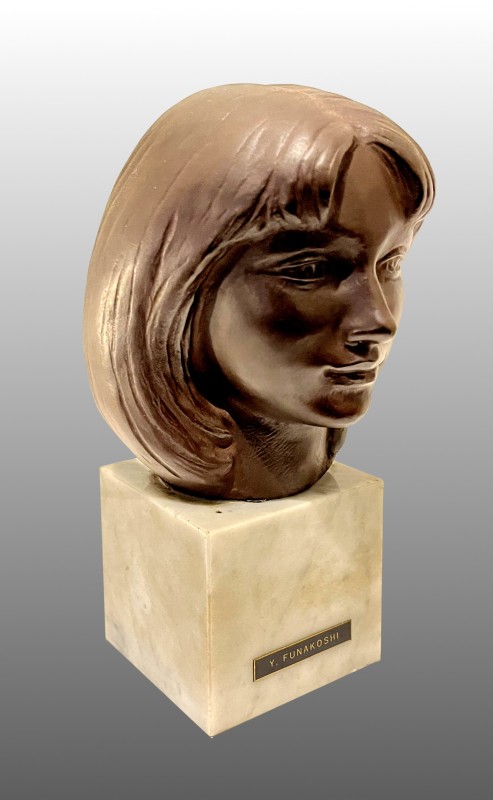Miss K.
Yasutake Funakoshi
(Sculptor)
Yasutake Funakoshi (7 December 1912 - 5 February 2002) was a Japanese sculptor. Together with Tadayoshi Sato, he was one of the leading sculptors of post-war Japan. Founding member of the Sculpture Department of the New Creation Society. Emeritus professor at Tokyo University of the Arts. Born in Bunka Gakuin. Considered a leading figure in stone carving by direct carving.
Born in 1912 in Kotoriya, Ichinohe-cho, Ninohe-gun, Iwate Prefecture. His father was a devoted Catholic. While a student at Morioka Junior High School (now Morioka First High School), he was impressed by Kotaro Takamura's translation of Rodin's Words (by his classmate Shunsuke Matsumoto) and aspired to become a sculptor.
In 1939, he graduated from the sculpture department of the Tokyo Fine Arts School (later Tokyo University of the Arts). At this time, he met Tadayoshi Sato, with whom he developed a lifelong friendship, and together they led the post-war world of Japanese sculpture. In the same year, he participated in the founding of the Sculpture Department of the New School Association and became a member. In 1950, his Azalea, exhibited at the 14th Shinseisaku-ha Exhibition, was purchased by the Ministry of Education. In the same year, he was baptised and converted to Catholicism following the sudden death of his first son shortly after his birth. From 1967 he was a professor at Tokyo National University of Fine Arts and Music, retiring in 1980; in 1981 he became a professor at Tama Art University, retiring in 1983; in 1986 he became professor emeritus at Tokyo National University of Fine Arts and Music; in 1987 he suffered a stroke that left him crippled on the right side of his body, but he soon began He was awarded the Order of Yasutake Funakoshi (7 December 1912 - 5 February 2002) was a Japanese sculptor. Together with Tadayoshi Sato, he was one of the leading sculptors of post-war Japan. Founding member of the Sculpture Department of the New Creation Society. Emeritus professor at Tokyo University of the Arts. Born in Bunka Gakuin. Considered a leading figure in stone carving by direct carving.
Born in 1912 in Kotoriya, Ichinohe-cho, Ninohe-gun, Iwate Prefecture. His father was a devoted Catholic. While a student at Morioka Junior High School (now Morioka First High School), he was impressed by Kotaro Takamura's translation of Rodin's Words (by his classmate Shunsuke Matsumoto) and aspired to become a sculptor.
In 1939, he graduated from the sculpture department of the Tokyo Fine Arts School (later Tokyo University of the Arts). At this time, he met Tadayoshi Sato, with whom he developed a lifelong friendship, and together they led the post-war world of Japanese sculpture. In the same year, he participated in the founding of the Sculpture Department of the New School Association and became a member. In 1950, his Azalea, exhibited at the 14th Shinseisaku-ha Exhibition, was purchased by the Ministry of Education. In the same year, he was baptised and converted to Catholicism following the sudden death of his first son shortly after his birth. From 1967 he was a professor at Tokyo National University of Fine Arts and Music, retiring in 1980; in 1981 he became a professor at Tama Art University, retiring in 1983; in 1986 he became professor emeritus at Tokyo National University of Fine Arts and Music; in 1987 he suffered a stroke that left him crippled on the right side of his body, but he soon began He was awarded the Or Cultural Merit in 1999.
Size:h21 x w9.5 x d11 cm Pedestal h7 x w7 x d7 cm
Media:Bronze, pedestal marble









